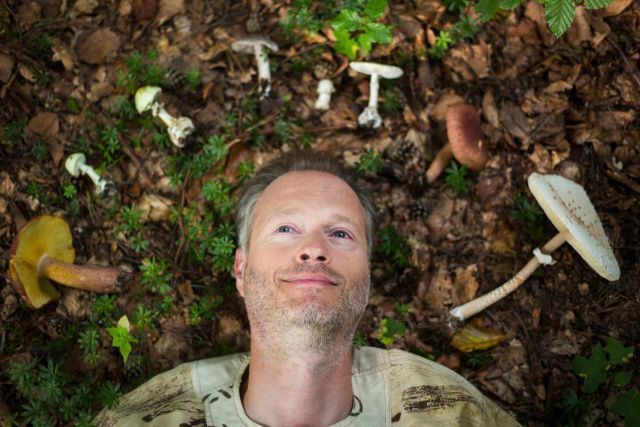Principal Investigator
:
Prof. Marc-André Selosse
University of Gdansk
Panel: NZ8
Funding scheme
: MAESTRO 7
announced on
15th June 2015
Since I was 12, I have had a passion for mushrooms and I spent all my free time in fields and forests, picking mushrooms and identifying them. As a student, I decided to shift to something more functional, dealing with fungal ecology and physiology: I developed a fascination for the mycorrhizal association. This symbiosis links the roots of 90% of land plants with soil fungi. One fascinating aspect is the weaving of the two partners into a dual organ, the mycorrhiza, made of living roots colonized by microscopic fungal filaments. A second one is the interwoven partners’ physiology: usually, the plant gives sugars issuing from its photosynthesis, while the fungus provides water and mineral nutrients collected in the soil. Moreover, this association protects both partners against pathogens and toxic soil compounds – so that neither can develop well without this symbiosis. As a mycologist, I am very interested in seeing how fungi help plants!
 At the University of Gdansk, I joined a stimulating community of botanists. Together we built a research program using the latest research tools available – transcriptomics, molecular barcoding, isotopic chemistry, metabolomics – to better understand the functioning and diversification of the mycorrhizal symbiosis in realistic ecological and evolutionary frameworks. Most orchids rely on fungi for their mineral nutrition, as do most other plants. But excitingly, some orchids species that are not photosynthetic derive all their nutrients, including sugars, from their mycorrhizal fungi (mycoheterothophic plants). Some green orchids even combine both trophic strategies (mixotrophic plants). Orchids are therefore a good model to study the various roles of fungi in plant nutrition.
At the University of Gdansk, I joined a stimulating community of botanists. Together we built a research program using the latest research tools available – transcriptomics, molecular barcoding, isotopic chemistry, metabolomics – to better understand the functioning and diversification of the mycorrhizal symbiosis in realistic ecological and evolutionary frameworks. Most orchids rely on fungi for their mineral nutrition, as do most other plants. But excitingly, some orchids species that are not photosynthetic derive all their nutrients, including sugars, from their mycorrhizal fungi (mycoheterothophic plants). Some green orchids even combine both trophic strategies (mixotrophic plants). Orchids are therefore a good model to study the various roles of fungi in plant nutrition.
Thanks to the National Science Center that funded our ORCHIDOMICS project in MAESTRO7, we are currently building an international network of collaborators, linking mycologists and plant specialists who, within the newly established Laboratory of Plant Symbioses at University of Gdansk, will study the mycorrhizal relationship between fungi and plants, especially orchids.
Project title: ORCHIDOMICS – Understanding the metabolism of orchids in their environments: omics methods for adaptations and symbioses in orchids
Prof. Marc-André Selosse
Born in Paris in 1968. He is professor at the University of Gdansk (Department of Plant Taxonomy and Nature Conservation), at Muséum national d’Histoire naturelle (Paris, France) and invited professor at University of Viçosa (Brazil). He earned his PhD (1998) and Habilitation (2002) at Université Paris-Orsay. His research focuses on the ecology and evolution of mycorrhizas, a major symbiosis between soil fungi and plants roots, with a focus on orchids’ mycorrhizal fungi and on the fungal taxa Sebacinales, Laccaria and Tuber (truffles). He has published over 130 research papers. More specifically, his team has an interest in fungal populations and communities, with a specific focus on mycorrhizal networks, and in plant nutrition physiology. His team works on both temperate and tropical models. At Gdansk University, he leads the Laboratory of Plant Symbioses (LAPS). He teaches biological interactions, ecology and evolution at various French, Brazilian, Polish and Portuguese universities. His principal teaching duties are at the Ecole Normale Supérieure of Paris and Lyon. He is also involved in teaching future high-school teachers. The president of the Société Botanique de France since 2010 and member of the French Academy of Agriculture, he is editor for the scientific journals Symbiosis, New Phytologist and Botany Letters. He is very active in popular science and his many outreach essays are freely available online.


